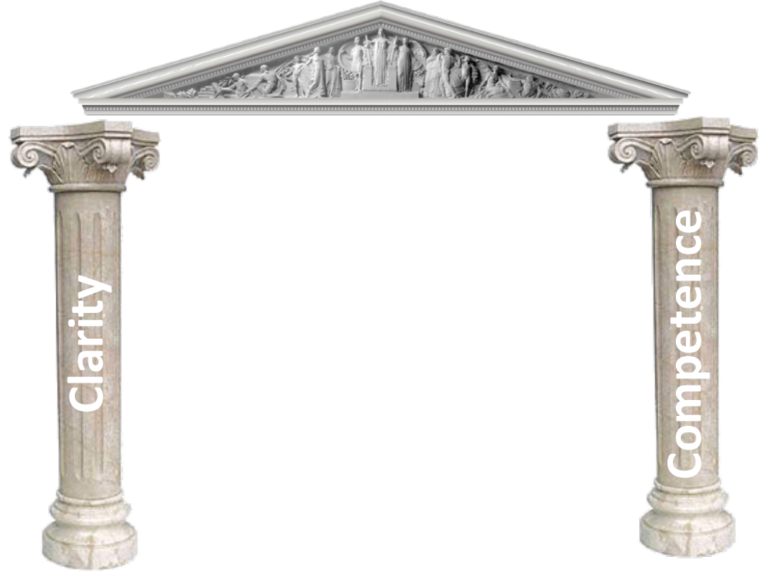
The Review and Approval stage is one of the most common sources of bottlenecks in marketing workflows. I’ve known teams who average 7-8 rounds of reviews for each work item. An average of 3-4 rounds of rework are not uncommon, delaying completion of work by weeks.
How can a team break free of the approval bottleneck? Here are four suggestions.
Don’t Let the Perfect be the Enemy of the Good
The second value of the Agile Marketing Manifesto reads, “Delivering value early and often over waiting for perfection.” Reviews and approvals should be in place to catch egregious mistakes and misalignments. They should not delay delivering value.
If review cycles start to pile up for a particular campaign or marketing deliverable, ask, “Are further reviews adding value, either for the customer or the business?” If not, cut short the review cycle.
Decentralize Decision Making
Management should not have to approve every detail of every campaign or marketing deliverable. Management should instead set broad criteria (more about this below) and ensure that everyone is trained in applying these criteria, and then let teams take responsibility for the quality of their work.
L. David Marquet provides a great framework for decentralizing decision-making while still ensuring that good decisions are made. He calls his approach the two key pillars of Intent-Based leadership.

Leaders must provide clarity: what are they asking the team to accomplish? Not how, but what, in enough detail that the team understands what is the right thing to do.
Leaders must also ensure that teams have the competence and skills to do things right. Marquet calls this technical competence.
With these pillars in place, leaders can delegate authority safely and effectively. In many cases, the team will come up with better solutions and decisions than the leaders.
Guidelines, Guardrails, and Safeguards
I previously wrote a blog post about guidelines, guardrails, and safeguards, which I encourage you to read. I’ll summarize the concept here and talk about how it applies to the approval bottleneck.
Guidelines are general rules or principles, but they are not inviolate. As a general rule, you want to follow the guidelines. But if your situation is different, or Agility requires a different approach, you can “violate” the guidelines.
Guardrails keep cars from running off the road. If you scrape a car against a guardrail, there are consequences, but they aren’t fatal. In business, guardrails are there to prevent more severe consequences. They should not be violated unless it’s unavoidable, like a car hitting a guardrail to avoid a more serious accident.
Safeguards are what organizations generally mean when they implement rules. They expect everyone to follow the rules, and there are no exceptions. Some rules should be safeguards. If you work in a highly regulated industry like banking, you have to follow the regulations. If you run a nuclear power plant, you must follow safety protocols.
But not everything needs to be a safeguard. If you have an expense policy of $100 a day, there may be times when exceptions are appropriate. You don’t want people to abuse the expense policy, but you want some flexibility where it makes sense.
Reviews should follow guidelines, guardrails, and safeguards. Legal reviews are in place to ensure that we don’t violate legal safeguards. Any specific rules put out by legal should not be violated. Following brand guidelines also rises to the level of a safeguard.
Other rules may be either guardrails or guidelines. Button sizes on landing pages, layouts of landing pages or ads, and copywriting guidelines are all examples of these kinds of rules. Established in advance, they should cut down on review cycles and provide consistency.
Acceptance Criteria and Definition of Done
If you can only do one thing to improve the approval bottleneck, apply Acceptance Criteria and Definitions of Done.
Acceptance Criteria are the criteria that a marketing effort or campaign must meet to be accepted by a customer or stakeholder. These are predefined requirements that must be satisfied for a particular deliverable or user story.
Definitions of Done are shared understandings of expectations that campaigns or strategies must meet to be considered complete. They are tied to a type of deliverable, not individual deliverables or user stories.

Setting up Definitions of Done and Acceptance Criteria in advance can greatly reduce rework and give the team objective criteria to satisfy before reviews are done.
Conclusion
Breaking free from the tyranny of the approvals bottleneck can reduce the cycle times of deliverables by 80-90% or more. Work that took weeks to get done can now get done in days. And in many cases, the quality improves.
Reducing the number of approval cycles also frees the team to deliver more value and frees managers and stakeholders to do other, more value-creating work.

